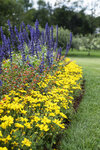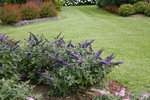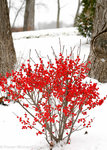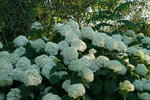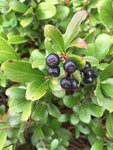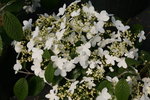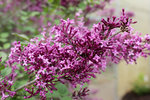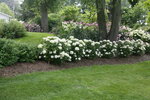ColorChoice Articles
Classic blue is a serene, calming color perfect for our current times. Who these days isn’t looking for some serenity in their lives? While flowers are the most obvious way to add blue to your garden, blue foliage, blue berries and even blue paint can all help create a calming oasis right outside your door. Here are 44 blue plants to consider for your garden.
Putting the flowers in flowering shrubs has always been our mission – and these plants epitomize that. They rebloom, which is to say that instead of just blooming once, along with conventional varieties, they go on to bloom again, or to keep blooming, through the season. If you are looking to add flowers, and plenty of them, to your landscape, take your pick of these ten favorites. All have been trialed and proven to be outstanding in the field, and in your garden.
Getting a good looking, colorful winterberry holly is as simple as having the right male....
Hydrangeas are extremely popular and the cool season of fall is the best time to plant them! Here are 5 easy-to-grow, easy-to-love hydrangeas that you can plant with confidence.
Purple is the new neutral in the gardening world. It goes with just about any other color you pair it with, from contrasting oranges to complementary pinks and greens. The descriptors “blue” and “purple” are used loosely when it comes to flowers and plants; they describe a whole range of these cool tones. Check out this list of thirteen purple landscape plants you’ll love in your garden.
While lots of people are talking about it these days, gardening for pollinators – insects, birds, and even bats that feed on the nectar, pollen, and leaves for plants - isn’t just a trend. It’s central to plants’ roles in our ecosystem. If you don’t get the appeal of attracting pollinators to your landscape, planting one of these ten shrubs will make you a convert. Each one is beautiful, easy to grow, and the pollinators they bring in will add another layer of excitement to the floral display. Or better yet, try more than one, layering in plants for all seasons, to invite nature’s visitors to your home for months each year.
Groundcover plants are a great answer to some of the most problematic garden and landscape conundrums. From uneven terrain, to places where you just can’t get other varieties to thrive, low growing groundcover shrubs are a great low-maintenance choice for small space gardening. These hard working plants can be used to dress up garden borders, as mass plantings in larger easy care landscaping projects, and as natural tool to prevent erosion. Plus, because of their low growing characteristics, less weeding and mulching is required where these groundcover plants are sited.
Over the years, we have surveyed gardeners to ask about their favorite flower colors. Pink is always high on the list of favorites. It’s a huge color category ranging from the lightest shades of baby pink to vivid fuchsia and every shade in between. Since it’s a top favorite, let’s take a look at some of our newest pink plants to warm up your garden.
Clay soil is much maligned by gardeners and homeowners everywhere, and no wonder: it’s heavy, sticky, and difficult to work in. But the simple fact is that clay soil gets its bad rap because it’s hard on people - from a plant’s point of view, clay soil is usually not problematic at all. In fact, clay soils offer plants two major advantages over other soil types: they hold water well, minimizing drought stress, and are abundant in nutrients essential for plant growth. So, if you’ve been struggling to achieve your dream garden or landscape in clay soil, cheer up! Here are ten beautiful shrubs that will thrive in clay.
I recently had the opportunity to speak to the Russian Nursery Stock Association at their annual conference in Moscow. This is the second time I have spoken at this conference and the attendees were once again eager to learn about new flowering shrubs that are hardy enough for Russian winters.



